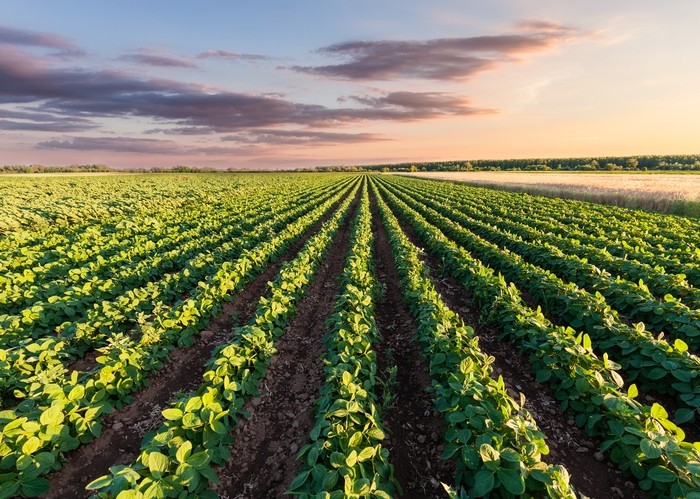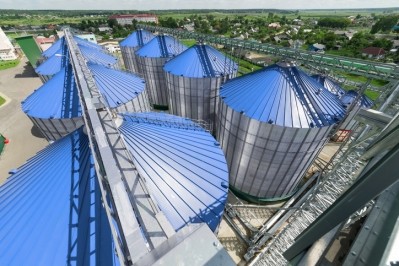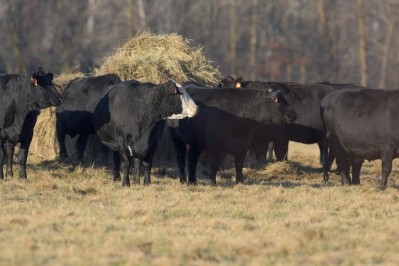Long-term US soybean outlook calls for drop in acres, lower prices

Netherlands-based Rabobank Group released its 2018 baseline outlook and 10-year projection for US soybean production on Monday [August 20].
Overall, if the current 25% tariff on US soybeans going to China remains in place, the expectation is for a drop in acres planted with the feed crop in the US, said Andrick Payen, corresponding author and grains and oilseeds analyst with Rabobank. However, acreage is anticipated to expand toward the end of the decade.
“Consecutive years of decreasing production, and lower ending stocks, puts upward pressure on farm soybean prices,” he told FeedNavigator. “As prices partially increase, planted acreage begins increasing in 2022/24, however, planted acreage remains stable in the backend of the baseline due to supply and utilization, with exports picking up again to 2016/17 levels and with crush demand growing at a steady pace.”
Loss of market share to China also will continue to dampen soybean prices as producers in the US will have to find alternative markets and be price competitive, according to the report. However, in the longer term, as production in the US starts to expand exports also will need to increase.
US soybean crush is anticipated to continue to see a margin benefit from lower prices for soybeans, although the industry will need to maintain a strong export pace, the authors said in the report. Longer term, this could lead to additional investment in US crush capacity, but other oilseeds like canola also are expected to keep a portion of the market.
“At the moment the international view is that high soymeal prices have benefited US crushers as drought conditions in Argentina reduced soybean production and the production of soymeal as a consequence,” added Payen. “US soybean crushers have benefited as lower soybean prices and higher meal prices contribute to higher crushing margins. However, if Argentina recovers, soymeal export market prices are likely to decrease.”
Trade and international markets also are set to play a role in domestic use of soybean meal, he said.
“In the domestic market, animal feed demand is expected to increase as the expansion in cattle and poultry continues to grow with higher animal numbers,” he said. “However, strong competition among animal protein due to the expansion of pork, chicken and beef has beginning to put downward pressure on animal protein prices, which could lead to a downturn in the cycle reducing eventually demand for feed in the next coming years.”
“Trade will remain key for animal protein to continue its growth and therefore the continued demand for soymeal,” he added.
Tariff influence
Without a change to current tariff and weather conditions, US soybeans likely will look to alternative export markets for pricing levels, said Payen.
“US soybean prices need to remain at competitive levels to be able to compete in markets where Brazil and Argentina export and competitive for Chinese market if the tariff is to remain in place,” he said. “As production continues to increase amid higher yields, soybean prices will remain challenged but also it will be hard for prices to go further down as margins for producers will be stressed. The only way to keep prices from going lower is reducing planted acreage.”
The expectation is that planted acreage will fall from the 89.6m acres planted this year by about 5 to 7% annually for the several years, the report authors said. Farm gate prices are forecast to stay in the range of $8-9 per bushel, which are below average for the last several years.
Production could drop to 84m acres by 2021 or 2022, said Payen. However, multiple years of declining production and a corresponding reduction in ending stocks could help boost prices leading to an eventual expansion in plantings.
Alternative production scenarios
However, if the duty on exports to China had not been a factor the US could have anticipated an expansion of 3-11% in soybean exports and continued growth in acres planted, the report authors said. The tariffs also play a role in depressing farm gate prices.
At this point, however, if the tariffs were removed this autumn there is still anticipated to be a drop in acres planted, said Payen. “As soybean tariffs are removed this would allow the US to export more soybeans and reduce stocks which would help prices increase due to lower supply,” he added.
“It would normally take a period to recover and allow for prices to increase to see planted acreage rebound,” he said. “For example, if tariffs are removed during this harvesting period, most likely acreage would rebound in 2020/21 relative to the baseline as 2019/20 continues to carry high inventories and prices remain low but higher than in the baseline.”
In addition to the tariffs remaining in place, report forecasts rely on normal weather patterns, the report authors said. In a drought scenario focused on 2023 or 2024 that limits production by 5-7%, ending stocks would fall and could allow for an expansion in planting of up to 2m acres.
The change would support increased farm gate prices, they said. However, the increased production could expand past the market during the recovery.









